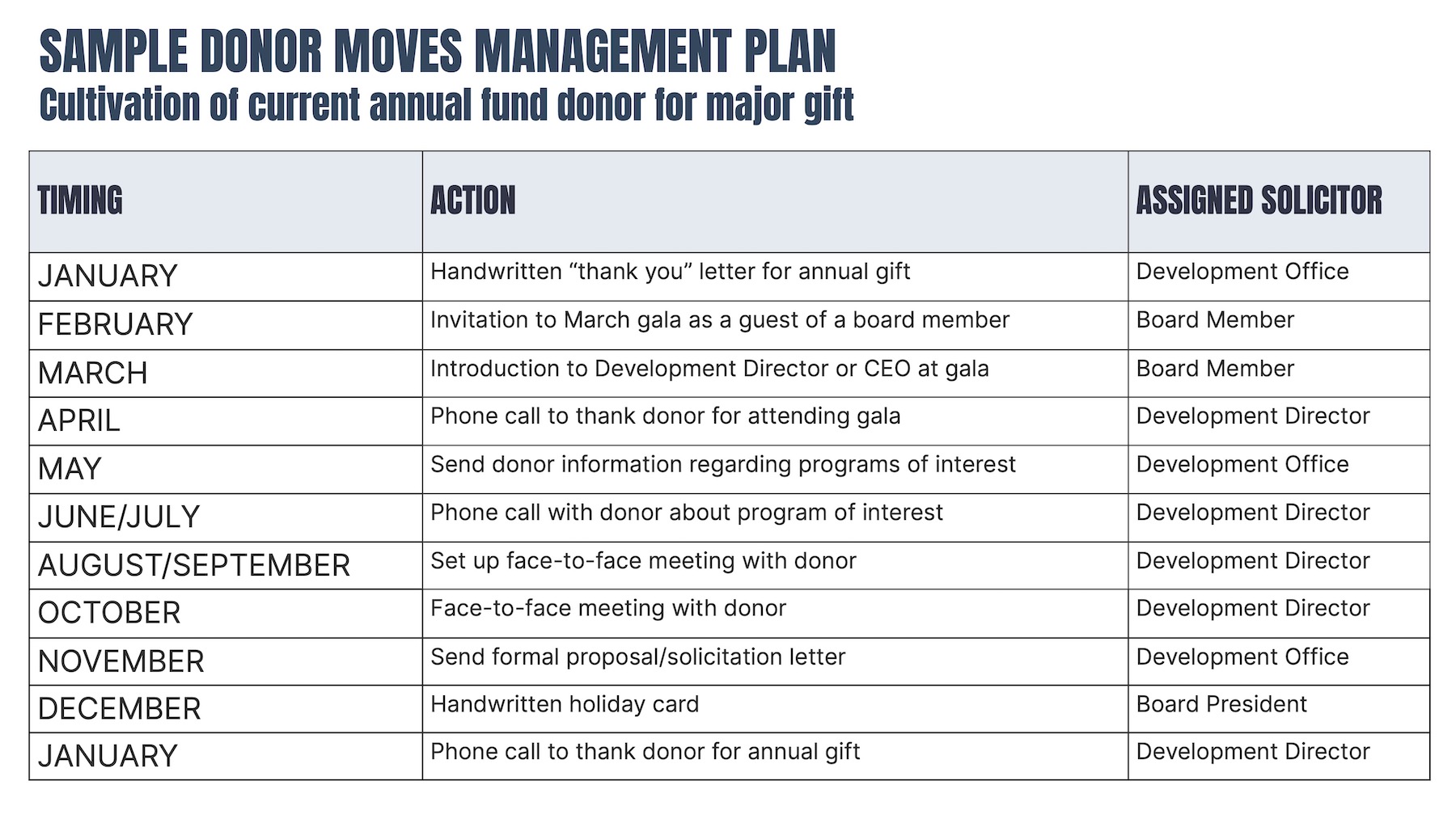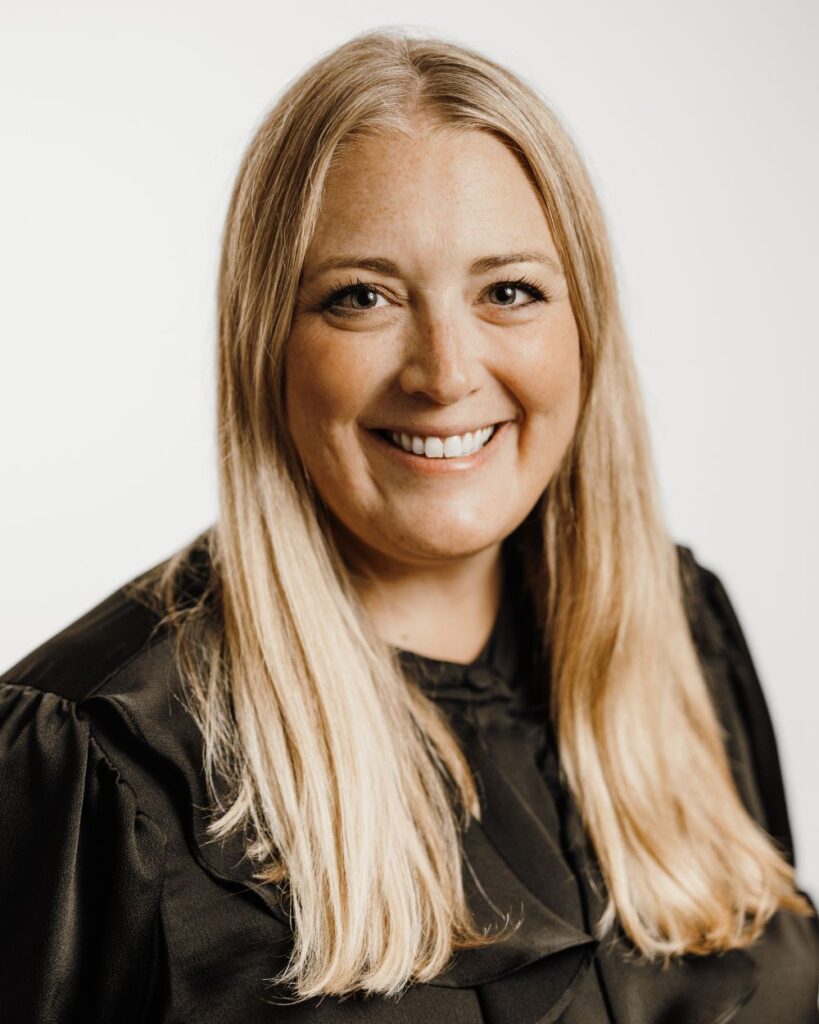Fundraising Moves Management: Inspiring Philanthropy One Donor at a Time

By Anne Spears, Campaign Manager
Development professionals must build personal relationships with people who give to their nonprofit so the donor feels connected to both the mission and the people who carry it out. Donors rarely give to organizations unless they align with its philanthropic vision or have relationships with board members, staff, or other supporters. Whether they realize it or not, donors move organically through a series of stages as they become more deeply involved with an organization. Development staffers can shepherd and track this progression through a process called “moves management.”
As fundraisers, we must be comfortable cultivating donors and asking for money regularly if we are going to conduct successful campaigns. Moves management is a tracking tool that allows us to inspire donors to give in a way that is most meaningful to them.
Why use donor moves management?
Moves management is a system of operations that development staff and nonprofit leaders use to strategically elevate personal engagement with donors. Moves management can be used in annual funds, major gifts, and capital and endowment campaigns.
When I worked at a small private school in College Station, Texas, I learned why donor engagement has to be personal. It was 2012, and we didn’t have a nonprofit donor database or system for tracking donors, so we set out to create one from scratch. The head of the school and I referenced attendance rosters dating back to 1962 and began reaching out to alumni. During the process, we transferred donor information and touchpoints from a spreadsheet to an electronic database and created a centralized, streamlined system by which we could track engagement of prospective donors. We scheduled meetings and hosted tours of the school. The head of the school did a beautiful job of reengaging former families by getting to know them and learning why they loved the school. Alums were overjoyed to be back on campus and felt reconnected to their school. This fresh engagement, which began with the head of the school’s personal invitations, ultimately deepened alum involvement and the completion of a successful capital campaign.
How to implement a donor moves management system
Effective moves management involves examining donor data, tracking donor engagement, and working with staff and volunteers to plan and implement campaign activities ranging from hosting events to asking for campaign gifts.
When CFA is working with a client in campaign mode, we meet to review every lead donor’s giving history, event attendance, volunteer participation, capacity to give, and more. From there, we can gauge the donor’s engagement with the organization, determine where they fall within moves management, and look for opportunities to bring them closer to contributing. We strategize on every activity, assign tasks to staff and volunteers, and set deadlines. For example, the first step with a prospective campaign donor may be for the executive director to ask them to meet. With each successive “move,” we work side by side with our clients to determine the best next step. Many of our clients report that we keep them accountable because they know we will follow up with them on their progress.
How to track moves
Tracking moves management can be accomplished with a donor database software or a basic spreadsheet. At CFA, we offer a proprietary campaign moves management dashboard customized for each client based on the organization’s goals. Many organizations are not fully utilizing their database software for moves management, so we also provide donor data strategies and training solutions to maximize clients’ existing tools and resources and help them implement a sustainable moves management system for the long run.

Regardless of your system, it’s important to determine and track several key items: Who is the donor prospect manager? Who is the assigned solicitor who holds the relationship with the prospective donor? How much have they given? Do they volunteer or attend events? How much are the ask amounts? What is the next step? Managing relationships, timing engagements, and tracking deadlines is vital to keeping solicitors on task and donors engaged.
- Consultant Tip: How you collect, maintain, and track donor engagement informs how you determine where a donor or prospect falls along the moves management path. Tracking engagement is also a way to uncover trends that inform the next best steps to reach your goals. Learn more about tracking donor engagement using data analytics.
Key steps in donor moves management
As a campaign manager, I see my role as the conductor who keeps the train moving forward on the tracks. Moves management is how I know which train is going where and when. Here are the five basic steps I follow:
1. Determine the “why.” Why are you acquiring more donors or seeking to increase the number or dollar amount of gifts? Your answer could be that you are growing the annual fund or raising capital for a new building.
2. Learn more about donors and prospects. Examine your data to determine each prospective donor’s motivation and capacity. If you are planning a campaign, consider conducting a wealth screening of your database.
3. Segment and strategize. Utilize the knowledge from examining your data, combined with the “why” of your campaign, to segment your prospective donors into groups and set goals for each group and each donor or prospect. Goals might be to encourage a segment to become recurring donors, to increase their annual donation, or to consider making a planned gift.
4. Engage donors and prospects. This is where the assigned solicitor personally engages prospective donors by following their inclinations and the campaign strategy. Our job at CFA is to guide our clients and help them set a strategy to cultivate and solicit personal relationships with leading prospects and donors. If you’ve done your job with cultivation, you’ll know the right time to make the ask and the right people to have in the room.
5. Track progress and next steps. It is crucial to input gifts in your donor database for historical record keeping and tax purposes, but it is equally important to track moves management and identify which strategies worked for which donor. There is always a next step. Check out CFA’s donor cultivation cycle to learn more.
Final thoughts
The goal in philanthropy is to help people engage meaningfully with organizations that address the issues they care most about. Every campaign is unique, and every donor has individual interests and levels of dedication to the mission. We can each inspire philanthropy when we give special attention to these nuances and build personal relationships with our donors.
Contact CFA to see how moves management and donor engagement can improve your fundraising efforts
Anne Spears, Campaign Manager
An experienced fundraiser with over a decade of experience in education, religious, and social service nonprofit fundraising, Anne is energized and inspired by working side by side with our nonprofit partners as a project manager for fundraising campaigns.
Most recently Anne was the Director of Development at the Episcopal Diocese of West Texas where she oversaw a multitude of fundraising initiatives including capital campaigns for Diocesan camp facilities and 87 Diocesan churches. Previously Anne was the Chief Development Officer for Ascension DePaul Services of San Antonio and the Development Coordinator at St. Thomas Early Learning Center in College Station, Texas. She also worked for the State of Montana as a social services specialist serving indigenous and rural populations.
Anne has a B.S. in Sociology, a M.S. in Family and Child Studies, and a Master of Public Administration. She also is a Certified Fundraising Executive (CFRE). Anne lives in San Antonio, Texas with her husband and three children.

